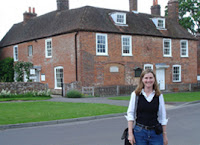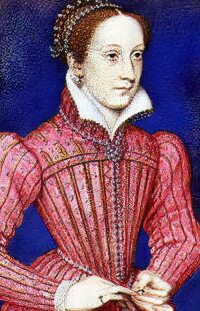
What if, hidden in an old attic chest, Jane Austen’s memoirs were discovered after hundreds of years? What if those pages revealed the untold story of a life-changing love affair? That’s the premise behind this spellbinding novel, which delves into the secrets of Jane Austen’s life, giving us untold insights into her mind and heart.
Today we welcome to the Riskies Syrie James, whose wonderful first novel The Lost Memoirs of Jane Austen is now on the shelves. As usual, your relevant comment or question enters you into a contest to win a signed copy of the book, and Syrie will drop by to chat and answer questions.
Syrie, welcome to the Riskies. How did you come up with the idea for The Lost Memoirs of Jane Austen? (which I loved, by the way–it was such fun to identify Austen’s inspirations and I found the ending tremendously moving).
 I’d read and loved all of Jane Austen’s novels, and couldn’t accept the historians’ theory that this wonderful, romantic writer never fell in love herself. Since Jane Austen was a very private person—all her books were published anonymously during her lifetime—I realized it was entirely possible that she had a love affair no one knew about. I decided to give her that love affair, with the man who was her soul mate; to write the book that I wanted to read.
I’d read and loved all of Jane Austen’s novels, and couldn’t accept the historians’ theory that this wonderful, romantic writer never fell in love herself. Since Jane Austen was a very private person—all her books were published anonymously during her lifetime—I realized it was entirely possible that she had a love affair no one knew about. I decided to give her that love affair, with the man who was her soul mate; to write the book that I wanted to read.
Tell us about the research.
I read dozens of Jane Austen biographies. I studied her letters in minute detail, reread all her novels, her juvenilia, and her unfinished works. I researched her era extensively and watched all her movies. I took a self-guided Jane Austen Tour of England. I even took English Regency Country Dance lessons!
 Did you find anything unusual or unexpected in your research?
Did you find anything unusual or unexpected in your research?
I was delighted by the gossipy, irreverent tone of Jane Austen’s letters and juvenilia. I was overwhelmed and awed when I visited Jane Austen’s house at Chawton, and walked through the very rooms she lived and wrote in during the last nine years of her life. Godmersham Park (the estate formerly owned by Jane’s rich brother Edward, where she often made extended visits) is far larger, and has more extensive grounds, than I ever imagined. The Cobb at Lyme Regis (made famous in Persuasion, and featured in my novel) offers absolutely gorgeous vistas, and is far windier than I expected!
Did you find channeling Jane Austen intimidating?
Only at first. After all the research, when I finally started writing, her voice seemed to come naturally to me.
Why do you think Jane Austen is so popular?
Austen was witty and ironic, and a brilliant craftsman. She wrote about real people in recognizable circumstances, and she examined what people risk when they fall in love—a very relatable topic in any era. I think her recent surge in popularity owes a lot to the movies. Something magical happens when you put Jane Austen’s stories on the screen!
Was this your first novel or do you have a collection of mss. under the bed that may never see the light of day?
Before The Lost Memoirs of Jane Austen, I wrote a medical thriller which my agent loves, but has (so far) been unable to sell. That was heart-breaking. In my years as a screenwriter, although I sold 19 scripts, I wrote several that are still available!
Sorry, I have to ask you–have you seen Becoming Jane and what did you think of it?
I thought it was beautifully and reverently filmed, but I was disappointed by the story. I didn’t find it romantic. However, I loved the film adaptation of The Jane Austen Book Club.
What’s your favorite Austen novel?
Pride and Prejudice.
What else do you like to read?
I read everything! I read the newspaper every day. I subscribe to a lot of magazines. I usually have at least three or four novels in progress on my nightstand. I especially enjoy historical fiction, historical romance, women’s fiction, biography, memoir, mystery, humor and the classics.
What’s next for you?
I’m busy maintaining my website at http://www.syriejames.com/ … and I’m researching and writing my next book for Avon: a love story for Charlotte Brontë (another one of my favorite writers.) As you can imagine, I’m having a fantastic time “being” Charlotte!
As usual, we welcome your questions and comments!


















